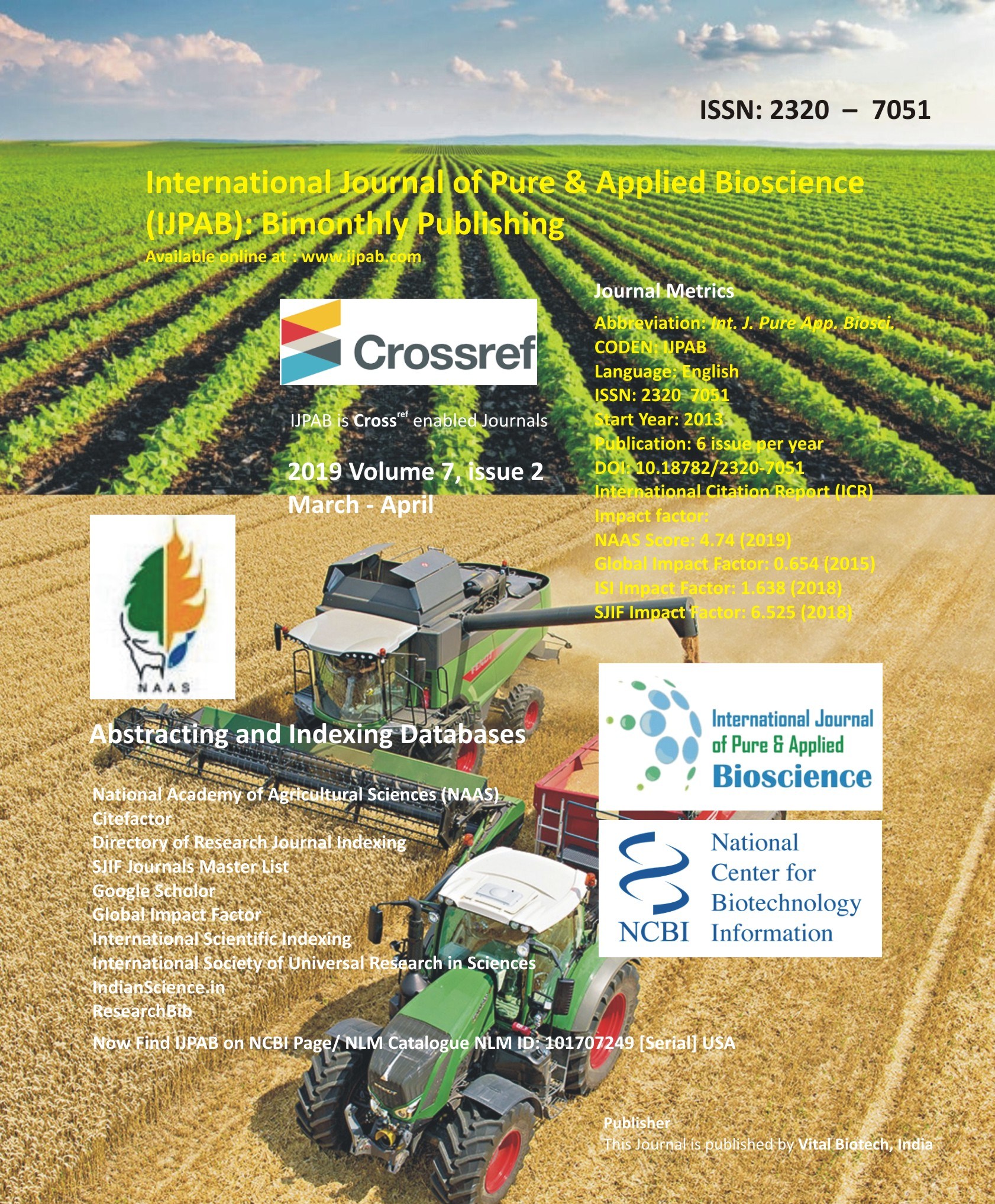
-
No. 772, Basant Vihar, Kota
Rajasthan-324009 India
-
Call Us On
+91 9784677044
-
Mail Us @
editor@ijpab.com
International Journal of Pure & Applied Bioscience (IJPAB)
Year : 2019, Volume : 7, Issue : 2
First page : (408) Last page : (414)
Article doi: : http://dx.doi.org/10.18782/2320-7051.7459
An Impact Assessment of Front Line Demonstrations on Yield and Economics of Finger Millet and Barnyard Millet under
Rainfed Conditions of Uttarakhand
Laxmi Rawat1*, Shambhoo Prasad1, T. S. Bisht2, Dinesh Chandra Naithani1 and Ankit Tiwari1
1Plant Pathology Division, College of Forestry, Ranichauri, Tehri Garhwal- 249 199, V.C.S.G Uttarakhand University of Horticulture and Forestry
2KVK, Ranichauri, V.C.S.G. Uttarakhand University of Horticulture and Forestry
*Corresponding Author E-mail: laxmirawatpathology@gmail.com
Received: 27.02.2019 | Revised: 30.03.2019 | Accepted: 7.04.2019
ABSTRACT
Small millets are more nutritious and have a lower glycemic index than rice and wheat, but factors like lack of improved varieties, agronomical packages and practices as well as unorganized seed system are constraining production and productivity. Therefore, the present study was carried out to know the yield gaps between improved practices and farmers’ practices under Front Line Demonstrations (FLDs) of finger millet and barnyard millet crops under rainfed conditions of Tehri Garhwal and Uttarkashi Districts of Uttarakhand. A total of 1,123 farmers were selected for frontline demonstrations in both the Districts, of which 80 ha land was covered by high yielding finger millet (PRM-2) and barnyard millet (PRJ-1) varieties over the last five years. The conducted FLDs made a very positive and significant impact on grain as well as on fodder yield of finger millet that ranged from 26.75 to 32.65 per cent and 23.18 to 29.27 per cent overall increase respectively while in barnyard millet, 36.50 to 42.17 per cent and 29.60 to 35.80 per cent overall increase in grain and fodder yield respectively was recorded during the last five years. The higher technological gap (5.63 to 8.81 qtl/ha), extension gap (4.82 to 8.25 qtl/ha) and technological index (23.46 to 40.05 %) in both the crops indicating that there is an urgent need of dissemination of location specific suitable package of practices. The data revealed that the conducted FLDs also enhanced the farmer’s income by increasing B:C ratio that ranged from 1.25 to 1.48 in both the crops. The impact of such demonstrations are quite strong as it is also visible from the fact that barnyard millet variety PRJ-1 has been one of the most accepted varieties by farmers of Uttarakhand for the last more than ten years and has been constantly under FLD programme since its release in year 2003 on farmers’ demand.
Key words: Small millets, Frontline demonstration, Technology gap, Extension gap, B:C ratio
Full Text : PDF; Journal doi : http://dx.doi.org/10.18782
Cite this article: Rawat, L., Prasad, S., Bisht, T.S., Naithani, D.C., and Tiwari, A., An Impact Assessment of Front Line Demonstrations on Yield and Economics of Finger Millet and Barnyard Millet under Rainfed Conditions of Uttarakhand, Int. J. Pure App. Biosci.7(2): 408-414 (2019). doi: http://dx.doi.org/10.18782/2320-7051.7459

